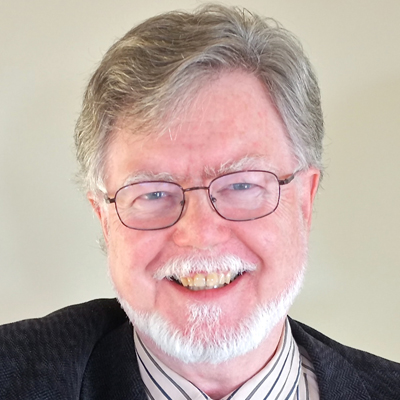Nature's energy frontier with detectors of unprecedented sensitivity
The highest energy particles known to man, called cosmic rays, arrive from outside our galaxy and reach the Earth's surface once per square kilometer per century. For this reason, researchers need large detectors, with areas approaching 1000 square kilometers to even attempt detecting such particles. Dr. Pierre Sokolsky, of the University of Utah, pioneered the development of a technique to study these ultra-high energy particles by utilizing the natural fluorescence of the atmosphere. This technique revolutionized our understanding of where these particles are coming from, what kind of particles they are, and how high their energy can reach. In fact, he operates the largest and most sensitive cosmic ray observatory in the northern hemisphere. His current project, called the Telescope Array, consists of telescopes and surface detectors covering a 700 square kilometer area in the western Utah desert. The impact of understanding such processes in plasma physics, elementary particle physics, general relativity as it applies to black holes, and the evolution of galaxies could be enormous.
Aside from the specific questions Dr. Sokolsky's research may help answer, his work also offers a glimpse into the amazing unknown processes of our universe. These subatomic particles bombard the Earth from space and some of them carry energies millions of times higher than anything that can be created in a laboratory. Understanding their nature and origin, will allow scientists to make sense of this unprecedented concentration of energy. An unexpected development thus far has been Dr. Sokolsky's discovery of a clumping, or "hotspot" of the highest energy cosmic rays emanating from a location near the Big Dipper. He and his team are working to upgrade their detector in order to study this exciting finding with greater precision. Through the study of the most violent and extreme processes of nature, Dr. Sokolsky and his team hope to expand our understanding of the laws of physics thereby leading to unexpected insights into how the universe works!
Current research includes:
-
Upgrading Detection: Dr. Sokolsky is working to increase the level of detection for cosmic rays. Through the expansion of the array, he and his team will be capable of detecting more cosmic rays with greater precision.
- Interpreting the Hotspot: With the recent discovery of a hotspot near the Big Dipper, Dr. Sokolsky and his team are working to make sense of the clumping of some of the highest energy cosmic rays in the same location. By shedding light upon the hotspot, Dr. Sokolsky may be able to more quickly and effectively determine how cosmic rays are created and accelerated and how they travel through the universe.
Bio
When Dr. Sokolsky was a child, he saw a Japanese monster movie called Rodan. There is a scene early in the film where Rodan hatches out of an egg in response to an atomic bomb explosion far away. The voice-over says, "for every action, there is an equal and opposite reaction." Even as a child, Dr. Sokolsky became fascinated with the cause and effect chain in nature. Years later, this fascination led him to become an experimental particle physicist, an area in science where he was able to confront the simplest and most elementary building blocks of the universe with the natural laws that are believed to be understood. After studying the properties of neutrinos at accelerator laboratories, Dr. Sokolsky became interested in the highest energy particles found in nature -- ultra-high energy cosmic rays. He then moved from Columbia University to the University of Utah because Utah was the best place to study such particles and processes.
In his free time, aside from research, Dr. Sokolsky enjoys music. In fact, in the 60's he was the guitarist for a band named, "Jack and the Beanstalks." He also enjoys amateur street photography and traveling.
Website: https://faculty.utah.edu/u0029107-PIERRE_SOKOLSKY/teaching/index.hml
In the News
Wikipedia
The University of Utah
American Association for the Advancement of Science
National Geographic
Telescope Array Project
Publications
Awards
Guggenheim Foundation Fellow, 2002-2003
Fellow, American Physical Society, 2002
State of Utah Governor's Medal for Science, 2006
American Physical Society W.K.H. Panofsky Prize for Experimental Particle Physics, 2008
for the development of the air-fluorescence technique to study cosmic rays


